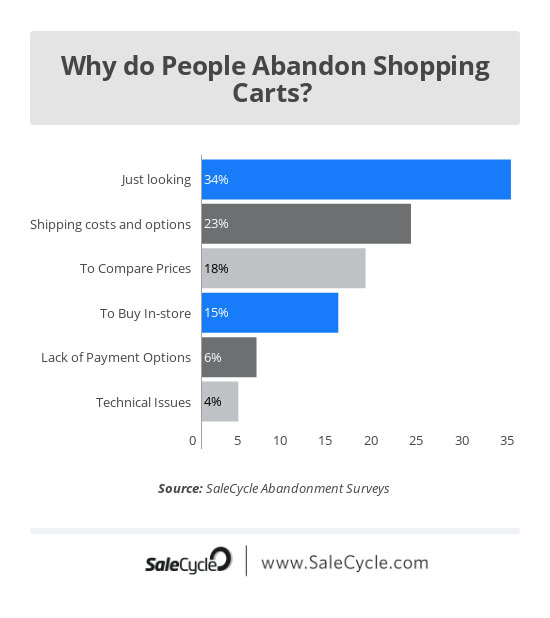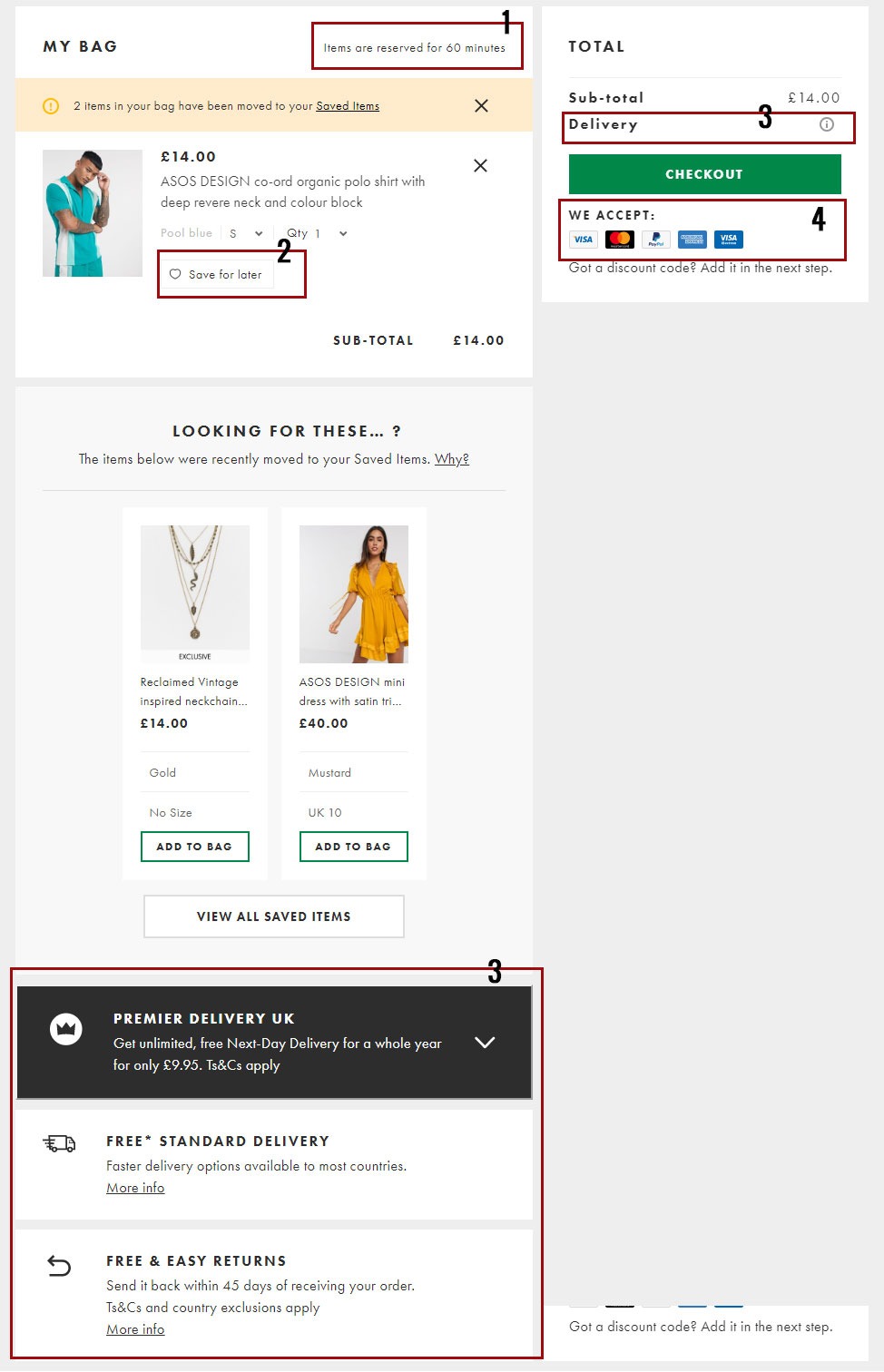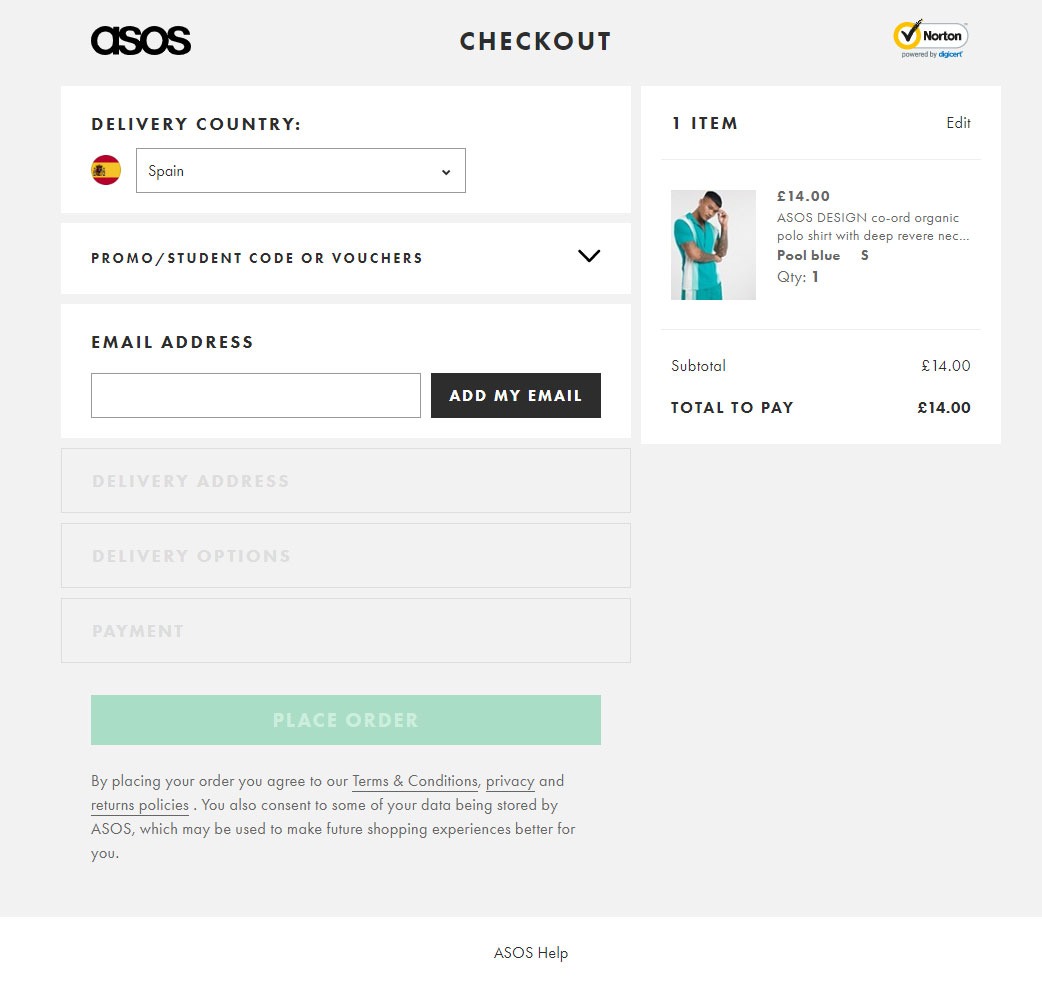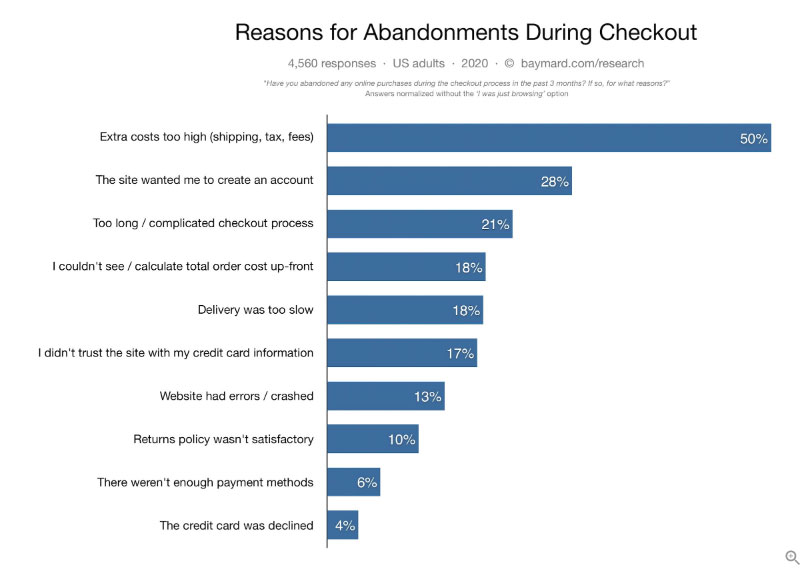
How to Increase Cart Conversion Rates
It’s frustrating and mind-boggling.
You look at your analytics. And you find that more than half of the people who add items to the cart abandon it.
It’s safe to assume that most of them didn’t accidentally add the items. They read the product pages, liked what they saw and then clicked the buy button.
Doing all that requires some form of commitment. At the very least, they’ve spent some of their precious time on your site. And have become emotionally attached to the products.
By all accounts, they should be engaged, customers. They should have a credit card in hand itching to give you their money.
But no.
Your analytics say otherwise.

Your precious shoppers leave items in their online shopping cart. They click the back button or the X on the browser window and off they disappear into the internet universe.
“What in the world is going on?” You ask. “Why do they leave the cart and not check out?”
Today, we’ll have a look at this. We’ll delve into the Psychology of cart abandonment and explore some strategies to reduce it. We’ll look at:
- why cart abandonment optimization is a great place to start CRO
- what factors cause buyers to leave during the checkout process
- how to increase cart conversion rate
Shopping Cart Optimization and Conversion Quick Wins
If you love easy wins as much as I do, you’ll love optimizing the checkout process. Small changes can lead to great results in the shortest possible time.
Why is this so?
The customer is ready to take the plunge. He’s at the bottom of the sales funnel. All he needs is a little nudge, an incentive or a bit of reassurance to complete the sale. You only have to find out what it is that pushes him to leave your site at this point in the buyer’s journey. Once you’re privy to this information, you can easily make changes to your site. And voila! Cart conversions go up.
But we all know this is easier said than done.
How do you know what’s stopping him?
Let’s find out.
Why do online shoppers abandon carts without completing the purchase
Here’s the not-so-good news.
More than 80% of customers who add products to the shopping cart fall through the cracks.
This means that for every 100 people, only about 20 of them finish the transaction.
That’s the bad news.
But wait a sec. Let’s look at the silver lining.
This means that there are 84 ready-to-buy customers. You have more chance of converting them than the cold traffic that lands on your site. Convert a bunch of them and you’ll see revenue go up quickly.
So the big question is:
“What’s stopping them?”
For this, we refer to Sales Cycle’s abandonment survey. In the study, Sales Cycle asked buyers the reasons why they leave a cart without checking out. Here’s the list
- Just looking (34%)
- Shipping costs and options (23%)
- To compare prices (18%)
- To buy in-store (15%)
- Lack of payment options (6%)
- Technical issues (4%)

From looking at this list, we now have a better idea of where to start our initial shopping cart conversion rate optimization.
This is a great insight into the minds of customers when they buy online. Furthermore, Baymard also conducted a study on checkout abandonment and this gives us even more understanding into why customers leave.
Here’s what they found out.
- Extra costs too high (shipping, tax, fees) (50%)
- The site wanted me to create an account (28%)
- Too long/complicated checkout process (21%)
- I couldn’t see/calculate total order cost up-front (18%)
- I didn’t trust the site with my credit card information (17%)
- Website had errors/crashed (13%)
- Returns policy wasn’t satisfactory (10%)
- There weren’t enough payment methods (6%)
- The credit card was declined (4%)
So here we can see an even more detailed picture of the specific factors for people leaving.
As you can see, these are things that are within your control. So to start optimizing the checkout process, what you really need to do is take down or lower these hurdles.
Now we’re getting somewhere.
How to increase cart conversion rate: Cart Abandonment Solutions That Work
Looking at the list above, you can see that there are four categories to look into if you want to increase cart conversion rate.
You’ll need to:
- Reduce shipping fees
- Address the buyer psychology
- Make the checkout process as easy as possible
- Fix any technical glitches
1. Reduce Shipping Fees
Shipping fees are the main reason why people don’t check out. So this deserves full attention. A lot of eCommerce shops realise that whenever they offer free shipping, cart conversion rates go up.
So if you can, offer it for free. The best way to do this is to add in the cost of the shipping into the product price. It’s effectively the same thing. But this little change massively affects how a buyer perceives your offer.
Now sometimes, it may not be cost-effective for you to do this. What do you do then?
Here’s my take on it: If you must charge for shipping, be clear how much it is from the get-go.
People are not necessarily against paying shipping fees. It’s the complexity of finding out how much it costs that annoys them. Most buyers know that sometimes they have to pay for shipping when buying online. And what’s more, they already have an idea of how much it will cost them based on past shopping behavior.
So one of the first things they’ll look for is how much the extra fees are. If this is too difficult to find on the page, then they will probably add the item to the cart to find out.
Remember that they already have an idea of roughly how much the shipping costs. If your store charges them a fee that’s higher than other stores (based on past experience), then they will abandon the cart.
My suggestion is this. Don’t overcharge on shipping fees. Keep it to the minimum. Also, don’t hide it. Put it right there on the product page. Be upfront about it.
2. Address the Buyer Psychology
Whenever a person buys online, anxieties prop up. We always have questions like:
- Can I trust this company?
- How long will it take for this product to arrive?
- Is this product as good as I picture in my head?
To mention just a few.
As the seller, it’s your job to ease these fears. Since you’re not there to physically respond to their questions, you can preempt them and have the answers right on your site. Some of these things we’ve discussed on this blog
- Add trust signals
- Follow UX principles
- Ask as little personal information as possible
- Add social proof
3. Make the checkout process easy
When you’re in a store, buying is easy. When you have all the things that you like in your cart, you just go to the cashier and pay.
Yet this isn’t our shopping habit when we buy online. We have time on our hands. We can compare prices. We can leave any time we want.
As an eCommerce store owner, you’ve got a lot of things working against you. So you have to make the process as easy as possible for your customers.
It sounds like common sense. And yet, it’s surprising how we make it so difficult for a buyer to make a purchase.
We ask way too much unnecessary information. We make checking-out a long-drawn-out process.
Imagine what our online buying process would be like offline. Actually, you don’t have to imagine. Here’s a BBC skit that perfectly illustrates it.
But seriously. The customer is ready. Making checkout so unnecessarily tedious only squashes the transaction.
The thing to remember is this:
Ask for as little information as possible.
Let me show you how Asos does this so well.
Here’s what their cart page looks like.

Everything on this cart is well-optimized to get a person to checkout. Notice the following:
- Adds a sense of urgency by holding the item for only 60 seconds
- Save for later button (for buyers who can’t finish the transaction right now or are only “window shopping”)
- Has very clear information on shipping and returns
- Has trust signals
- Makes it easy to see what to do next
Notice that on this page, you don’t have to add any personal information yet. All you have to do is click that checkout button – a micro-conversion which can mean a big change in the buyer’s psychology.
As soon as he clicks it, he invests his time in the checkout process. And as the foot-in-the-door technique shows, we’re more likely to agree to a bigger request after a small one.
But the ease of buying doesn’t stop here for Asos. When you click checkout, you can sign in if you’re registered. If you don’t have an account with them, there’s the option of a one-click registration using Facebook, Google or Twitter.
And what if you don’t want to register?
No problem. You can just check another button to be taken straight to the checkout page.
These three different ways to check out consider different buyers at this point. What makes it even more impressive is the way they make it easy to get to checkout even for people who are not registered in their system.
Here’s what it looks like. Study it. I bet they have done a lot of conversion tests on this.

Notice how each step is very clear. The design helps direct the buyer to the next step without being intrusive or demanding.
Notice how each succeeding step is grayed-out.
This focuses the buyer on one step/action at a time. That’s pretty clever. It lessens the cognitive load and gives the viewer the “permission” not to think about anything else.
In this case, the buyer only has to add an email address.
For Asos, I think that’s the minimum amount of information they need to make sure they can still get in touch with you should you bail at this point. You can’t, however, proceed to the other steps without adding your email. And here’s the thing. The email address offers the least resistance when it comes to giving personal information on an eCommerce store.
Once you add your email address, you are then prompted to add in your delivery address. And check this. You don’t even have to type in your full address. They have an automatic system that gives address suggestions just from writing one word. Believe it or not, most people don’t use auto form fillers. And they also hate writing down their address every time they buy something online.
So there you have it. An example of a very slick checkout process.
If you’re in eCommerce and you have cart abandonment problems, then I suggest looking at the Asos process and see if there is anything there that you can test on your own site.
4. Fix any Technical Hiccups
Strangeloop recently conducted a study to examine the impact of site speed on finishing a 5-step online transaction. They had two different sites with exactly the same content. The only difference was that one of the sites was given a 2-second delay.
Here’s what happened:
In the control, all respondents finished the transaction. However, for the site with the 2-second delay, this dropped to 60% conversions.
You may think that if a person is motivated enough, he will live with slow site speed. But as we can see from this experiment, there’s a good percentage of your customers who don’t. The good news is that this is something you can easily correct.
Learn the art and science of getting your customers back
No matter what you do. No matter how slick and well-thought-out your checkout process is, there will be buyers who abandon the cart for one reason or another.
But all is not lost.
You can still get them back. Here are different ways you can do that:
Set up an exit-intent pop-up
Many people say they hate pop-ups. But the truth to the matter is they work. An exit-intent popup delivered at just the right time can make a person reconsider leaving. To make this work, have a pop-up that offers an incentive or fires-up a sense of urgency. The incentive can be a discount, waived shipping fee or a gift card for his next purchase.
Find out the possible reasons why your buyers are leaving, then you can easily test different pop-ups to entice most of them back.
If you don’t want to use an incentive, try adding a sense of urgency. Here’s how Bookings.com does it.

Get them back as they surf the web
Unless the person who abandoned the cart follows your brand or is really interested in your products, he will likely not come back to finish the transaction.
So you need to follow-up by using retargeting ads. If you don’t have a pixel on your site yet, it’s time to get started. In fact, retargeting has been found to have the highest ROI and highest lifts of all the targeting strategies.
Remind them with cart abandonment emails
For many eCommerce sites, you can easily ask for a customer’s email address during the checkout process without causing too much friction.
If you have their email address (and providing you follow all GDPR guidelines), then entice them back with cart abandonment emails.
Cart abandonment emails work well when timed right. There are many ways to do this.
I recommend sending three emails. Send the first one about an hour after abandonment, the second one a day after and the third one, three days after.
More than 3 can just be plain annoying and may even drive the person away.
Wrapping it up
I have shown you the reasons why buyers abandon shopping carts and what you can do to lessen the frequency of this happening.
Test the strategies above to increase cart conversion rates. Not only will you know more about your customers’ motivations. But you will also be improving your site’s checkout process and increasing your revenue.
But as always, remember that you can’t just copy and paste these best practices. First understand why your customers are leaving. Understand their psychology and know what elements on your page stop them from buying.
When you understand this, then making changes to your checkout process to increase conversions becomes an easy task for your team.

 Source
Source






 To get started, please enter your details below
To get started, please enter your details below
0 Comments